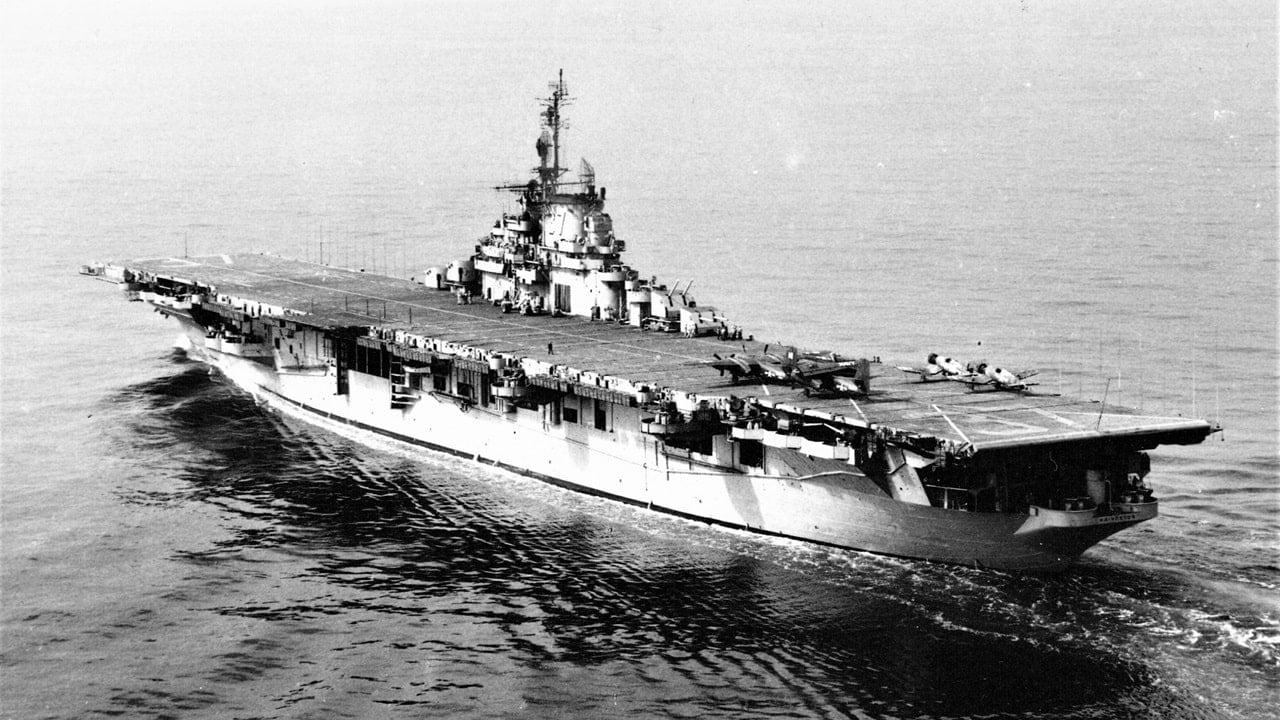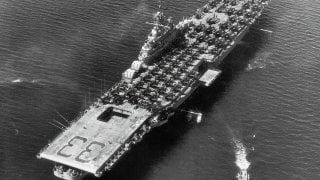Aircraft Carrier USS Kearsarge Proved Why the Essex-Class was a Powerhouse
In 1946, USS Kearsarge was commissioned, representing the 16th Essex-class aircraft carrier to enter service with the U.S. Navy. The carrier earned five battle stars.
CV-33 USS Kearsarge Aircraft Carrier Profile: In 1946, USS Kearsarge was commissioned, representing the 16th Essex-class aircraft carrier to enter service with the U.S. Navy.
Following the Second World War, CV/CVA/CVS-33 would be converted as an attack carrier and later an anti-submarine carrier. During her service years in the Vietnam War, the carrier earned five battle stars.
Introducing USS Kearsarge
As one of the Essex-class “long-haul” ships, Kearsarge incorporated many enhancements not available on preceding carrier classes. In the 1920’s, the major Allied countries signed the Five Power Treaty, limiting naval expansion in hopes of preventing an arms race.
The agreement specifically placed limitations on capital ships including battlecruisers and dreadnought battleships.
As detailed by the U.S. Navy website, “The U.S. Navy website states, “With regards to aircraft carriers (defined as a warship designed exclusively for launching and landing aircraft), the Five-Power Treaty allotted the US and Great Britain 135,000 tons each, Japan 81,000 tons, and France and Italy 60,000 tons each. For the US, the Five-Power Treaty limited each individual aircraft carrier to 27,000 tons and a maximum of 10 heavy guns.[13] Articles IX and X of the treaty allowed each signatory to utilize the hulls of two already-existing capital ships for aircraft carriers, each limited to a displacement of 33,000 tons.”
For years, these guidelines impacted the Navy’s carrier classes, including the Lexington and Yorktown ships. However, by the 1930’s, both Japan and Italy repudiated the treaty, effectively enabling all five signatories to carry out in their respective naval expansion projects without any limitations.
The Essex-class ships were the first constructed outside of the treaty’s limitations. The USS Kearsarge, like her sister ships, were designed to be longer, wider and heavier than their predecessors. Additionally, she was fitted with a deck-edge elevator which allowed for more efficient aviation operations. As aerial power dominated the Second World War, this ability was significant.
Operational history:
USS Kearsarge was laid down in 1944 by the New York Navy Yard in Brooklyn, New York. She launched one year later and was commissioned in early 1946. During her first year in service, USS Kearsarge participated in training operations in the Caribbean and along the East Coast.
In May 1948, tragedy struck the carrier. As she prepared to deploy to the Mediterranean, an open launch carrying 90 men back to the ship from liberty capsized near Virginia in poor weather conditions. Ultimately, 18 sailors and ten marines were swept away by the heavy surf and died.

Following her stint in the Mediterranean, USS Kearsarge was decommissioned in 1950 at the Puget Sound Navy Yard where she underwent a major overhaul to be able to carry new jet aircraft.
Fully modernized, the carrier would engage in combat in the Korean War. By the end of the decade, the carrier would again be modernized as an anti-submarine warfare support carrier. USS Kearsarge would finish off her career in Vietnam, where she contributed mightily to the U.S. war effort. She was decommissioned in 1970 and was sold for scrap three years later.
About the Author: Maya Carlin
Maya Carlin, National Security Writer with The National Interest, is an analyst with the Center for Security Policy and a former Anna Sobol Levy Fellow at IDC Herzliya in Israel. She has by-lines in many publications, including The National Interest, Jerusalem Post, and Times of Israel. You can follow her on Twitter: @MayaCarlin.
Image Credit: Creative Commons.


